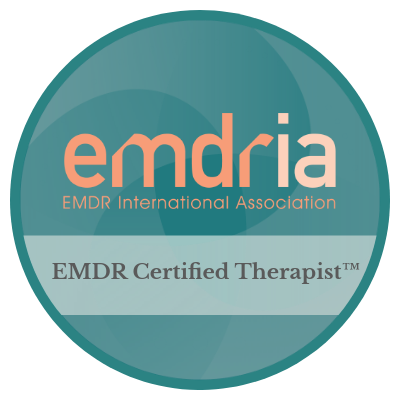Good news—EMDR teletherapy works just as well online as it does in person!
Research (including studies by McGowan et al., 2021, and a 2023 systematic review) shows that telehealth EMDR is highly effective in treating PTSD, anxiety, and depression. Virtual sessions help reduce symptoms and improve well-being, making therapy more accessible and flexible for those who need it.
While some were initially skeptical, teletherapy has proven to be a game-changer, allowing more people to commit to regular sessions and see real progress.

“Why EMDR? EMDR works fast, is integrative, doesn’t necessitate prolonged exposure (which can be re-traumatizing), and requires no homework. It activates natural processing capacities of the brain that are frozen and deactivated by trauma. It re-establishes disrupted communication between the brain regions impacted by traumatic experience and enables the traumatized brain to heal.”
~ Laurel Parnell
How Does EMDR and Teleherapy Work?
I use a tool called Bilateralstimulation.io that is designed specifically for online EMDR.
Here’s an example of what bilateral stimulation may look like via teletherapy.
For EMDR teletherapy, Bilateralstimulation.io is a fantastic tool that offers customizable bilateral stimulation, including visual, auditory, and tactile options. Its easy-to-use design ensures that both therapists and clients can focus on healing rather than dealing with tech issues. Since it delivers consistent and controlled stimulation, it’s become an invaluable resource for making online
EMDR sessions just as effective, engaging, and seamless as in-person therapy.
The Train Journey Metaphor for EMDR
Think of EMDR like taking a train ride through your memories. The starting station represents the trauma as you currently experience it. As the train pulls away, your job is simply to observe—like looking out the window—without forcing thoughts or searching for meaning. You may notice shifts in emotions, body sensations, insights, or related memories, or you may not notice much at all—and that’s okay.
During the journey, there are pauses (every 45–60 seconds), just like when a train slows at a station. During these moments, your therapist will check in with you, asking briefly what you’re noticing. You don’t need to explain everything- just share whatever stands out. If the memory is shifting naturally, the journey continues. If it feels stuck, your therapist may guide you to help it move forward.
At times, you’ll be asked to refocus on the memory or rate its intensity. Whatever you experience in the moment is valid—there are no right or wrong answers in EMDR, and you can’t do it incorrectly. The goal is simply to help the train (your processing) continue down the track until the memory no longer feels distressing.



